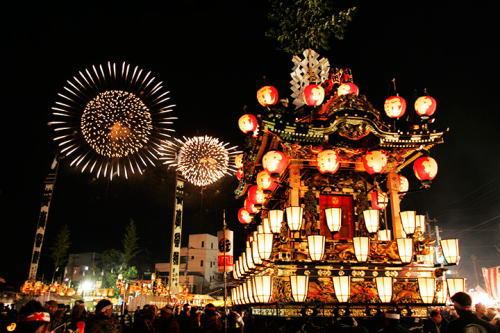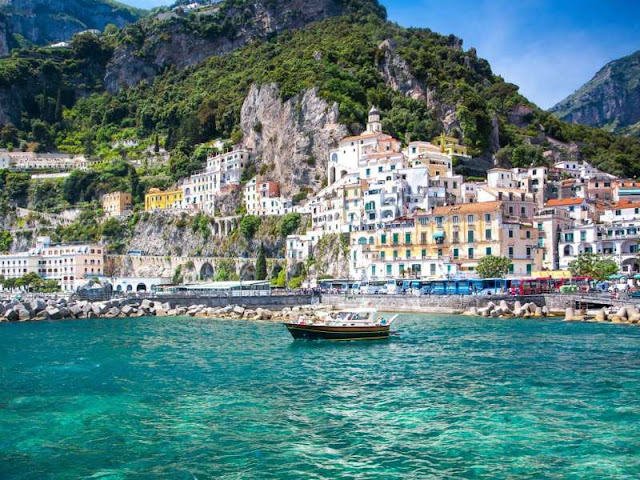Japan - Festivals
10 Most Popular Japanese Festivals
Matsuri are traditional Japanese festivals and they have a very long history. The date and nature of each festival vary from area to area. Matsuris are powerful, energetic, enjoyable and everyone is welcome to participate in them. The main highlight of these Matsuris are the processions and the floats.
Japan can easily be called as the "Land of Festivals" as more than 300,000 traditional matsuris are celebrated here.
Here I am going to tell you about 10 most popular Matsuris in Japan.
1. Gion Matsuri: -
Gion Matsuri is held every year in Kyoto, and is celebrated for the month of July.
It originated as a part of purification ritual to appease the Gods, who were believed to cause earthquake, fire and floods. It was first started by Emperor Seiwa in 869 AD, when he asked people to pray in order to end the plague and pestilence which broke out in the same year.
The main highlight of the festival is the grand parade called Yamaboku Junko, held on 17th and 24th July. Kyoto's streets are reserved for pedestrians 3 nights before the parade.
There are 2 types of floats used during this parade : Hoka and Yama
- The 9 larger Hoka floats represent 66 spears of the original festival.
- 23 smaller Yama floats represent life size figures of famous people.
If you are a foodie, then this festival is just for you. Streets are lined with night stalls selling traditional Japanese foods like Yakitori, Taiyaki, Takoyaki and Okinomiyaki.
Girls dress up in Yukata, crrying traditional purses and paper fans.
2. Kanda Matsuri: -
Kanda Matsuri is one of the biggest festivals in Japan. It is celebrated in May every odd numbered year like 2013, 2015, 2017 etc.
It started in 17th century during the Edo Period. The Kanda Matsuri is the festival of Kanda Myojin Shrine which enshrines three deities :
- Daikokuten - the God of good harvest and matrimony.
- Ebisu - the God of fishermen and businessmen.
- Taira Masakado - a feudal lord of 10th century.
It is celebrated for the entire week, but the main event is held on weekend closest to 15th May. The main procession is held on Saturday followed by Mikoshi Parades on Sunday.
The three ornately decorated Mikoshis of the 3 deities are major part of this procession. These shrines(mikoshis) are paraded through the streets of Kanda, Nihonbashi, Otemachi and Akihabara.
Thousands of people including musicians and priests accompany these mikoshi in traditional costumes.
For the second part of the procession, people dress in Samurai uniforms. Festival floats from popular folk stories and contemporary pop culture, musicians and dancers are the main highlight.
For the Sunday Parade, the 3 deities are accompanied with Ujigami which are local guardian deities.
3. Setsubun: -
It is also known as the Bean Throwing Festival. It is celebrated annually on 3rd or 4th of February. It is celebrated in order to scare way the evil spirits at the beginning of spring.
The most commonly performed Setsubun is the throwing of roasted beans around ones house and at temples and shrines across the country. This ritual is also called Mame Maki. When throwing the beans, you are supposed to shout "Oni Wa Soto! Fuku Wa Uchi!" (Devils Out! Happiness in!). Afterwards you should pick up and eat the number of beans corresponding to your age.
Other traditions involve eating of Eho-maki, which is a special Setsubun sushi roll. The tradition is that one should make a wish on the evening of Setsubun, turn to the lucky direction of the year and eat the whole roll in complete silence for good luck. This year the lucky direction was South South-Southeast and a little bit to the right.
4. Awa Odori: -
This is the largest traditional dance festival in Japan held in Tokushima city. Men, women and children all dance together on the streets of the city. It is held every year from 12th to 15th August. People wear summer cotton kimono and straw hats. Everyone is welcome to join them and dance to their rhythmic music.
It is well known throughout Japan for these words "It's a fool who dances and a fool who watches! If both are fools you might as well have fun dancing !". Funny, right ?? What's more funnier is the origin of the festival.
It was started in 1587, when the then feudal lord Hachisuka Iemasa in the celebration of his newly built castle offered Sake(Japanese Rice Wine) to his people. The people were so drunk that they began stumbling and weaving back and forth, thus starting the unique festival.
If you have witnessed any other such unique festival, do let me know.
5. Aomori Nebuta Matsuri: -
This festival is held every year from 2nd to 7th August in Aomori city in Tohoku region. The highlight of the festival is the daily parade of enormous lantern floats, flanked by large taiko drums, musicians and dancers. The floats usually depict Gods, historical and mythical figures from both Japanese and Chinese origins.
There are 3 types of floats mainly Children's Nebuta, Regional Nebuta and Local Organization Nebuta. Each year the best floats are recognized and on the evening of the sixth day, the top 3 floats are transported to ships in Aomori harbor to cruise along the bay.
6. Kishiwada Darjini Matsuri: -
It is held in Kishiwada city in Osaka during the mid of September. It is one of the most thrilling festivals in Japan.
A Danjiri is a traditional Japanese wooden float with beautiful carvings, some of which weigh more than 3000 kg. This festival started in the early 18th century to worship Shinto Gods for good harvest.
The Kishiwada Danjiri Festival features 35 elaborately hand carved danjiri festival floats which are pulled by an eager team of upto 1000 participants. Each floats represents the different district of the city where each team is vying for the victory and honor it will bring to their neighborhood.
Rhythmic taiko drumming and shino flutes accompany the floats by groups of musicians to encourage different teams. If you are a thrill seeker, the this festival is just for you.
7. Nagasaki Kunchi: -
This festival began as the celebration of autumn harvest in 16th century and became the shrine festival when Suwa Shrine was founded in 1642. The main aim of the festival was to check for hidden Christians after the ban on Christianity. The festival incorporates various aspects of Chinese and Dutch cultures which have played a major part in the city's history.
The seven districts of Nagasaki get a chance to perform only once every seven years. The main highlight of the festival is the Chinese Dragon dance which is accompanied with various Japanese traditional dances and also performances involving large floats which are shaped like ships.
8. Tanabata Matsuri: -
Tanabata, also known as the Star Festival, is a Japanese festival originating from Chinese Qixi Festival. It celebrates the meeting of the deities Orihime and Hikoboshi (represented by stars Vega and Altair respectively). According to the legend, Milky Way separates these two lovers and they are allowed to meet only once in a year, which is this day.
It is held on seventh day of seventh lunar month of Japanese lunisolar calendar.
You can find beautiful colorful paper decorations hanging around the street. The major attractions during the festival are concerts, parades and fireworks.
9. Hakata Dontaku Matsuri: -
This festival is held annually in Fukuoka. People dance and parade through the streets carrying wooden Shamoji. The Shamoji is a wooden utensil for serving rice, evokes the image of a woman who is busy preparing meals.
One of the most beautiful scenes of the festival is the parade of gorgeously decorated vehicles called Hana Jidosha.
The festival is held during the Golden Week when there is a series of national holidays from end of April to early May. This year it will on 4th of May.
10. Chichibu Night Festival: -
This festival is celebrated every year on 2nd and 3rd of December in Chichibu. The Chichibu Night Festival is considered as one of the best festivals to feature floats. Its floats are ornately decorated with lanterns, tapestries and wooden carvings and are accompanied by drum and flute music.
The other attraction during the festival are fireworks display, which lasts for almost 2 hours and is an excellent opportunity to experience Japanese fireworks in winter.
There are many street stalls selling festival foods and amazake (sweet rice wine) to combat winter cold.
Also See: -
Japan-history timeline ; Japan-geography ; China-culture and festivals ; India-culture-and-festivals
References: -
- https://en.wikipedia.org/wiki/Japanese_festivals
- https://www.tsunagujapan.com/10-popular-japanese-festivals/
- https://www.japantravel-centre.com/japan_guide/famous-japanese-matsuri/
- https://boutiquejapan.com/best-japanese-festivals/
- https://www.japan-guide.com/e/e2063.html













Comments
Post a Comment